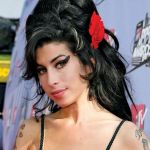
The return of the 70s-inspired "psychedelic" print
A return in full swing on runways and pop culture for the beloved 70s trippy pattern
July 28th, 2021
Following the summer escapist wave and bright colors frenzy, fashion reflects the whirlwind of rediscovered emotions with return in full swing of the psychedelic print. Child of the late '60s, therefore a flower child, it was worn by millions of people fond of psychedelic culture, where spirituality and LSD characterised the passions of people used to wear their colors fused with each other, perfectly in line with the libertine and unconventional hippie aesthetic. Despite its decadence with the arrival of disco aesthetics of the 80s, psychedelic print came back in 2014, when big brands such as Emilio Pucci and Dries Van Noten started using it again in their Spring/Summer collections. Today, its return to the catwalks formalizes the nostalgic mood that looks back at 70s trends and places psychedelia everywhere this summer. Raf Simons, Tom Ford, Gabriela Hearst, Rodarte and The Attico are just some of the names that have chosen the print for summer looks, taking advantage acid colors and soft lines unique mix. The trend is back to full swing, and NSS G-Club wants to tell you some more details about the history and evolution of psychedelic fantasy.
The origins
surrealism
The details that distinguish the psychedelic fantasy are mainly fantastic subjects, kaleidoscopic spirals, acid colors in contrast and peculiar details. All these elements can be traced back to the art of the end of the twentieth century: French Art Nouveau, Surrealism, Op and Pop Art are artistic currents that lay the foundations for the development of a strong and communicative use of color and symbols, capable of leaving the audience amazed.
An American story
San Francisco was the epicenter of hippie culture in the 1970s, and it is right here that artists like Wes Wilson and Victor Moscoso developed the concept of "trippy art", mixing colors and massice fonts to create concert posters. On the West Coast, colour contrasts based on opposite shades in the colour wheel came to life, creating the strong visual impact of the print, which is now also used in DIY tie-dye. All the young Californians proudly wore the print, a symbol of belonging to the hippie culture and the mood of reconnection with nature and spirituality so much in vogue before the decline at the end of the decade.
The return on the runway
The influence of cinema and celebrities on fashion is no secret: that’s why after the release of the film Inherent Vice, "trippy" style adaptation of a classic noir movie in 2013 and "Jimi, All is by my side", biographical film about the life of the rock star Jimi Hendrix starring Andrè Benjamin of the "Outcast", the psychedelic print jumps back into pop culture as a bolt from the blue. Designer Anna Sui used it in Spring/Summer 2014 for a personal interpretation of festival dressing, Emilio Pucci for evening dresses, echoing the hippie aesthetics but making them glam and in the same year also Dries Van Noten dusts it off. From that moment on, the psychedelic print never faded away again: on current catwalks, the print permeates pants, dresses and jackets in Raf Simons' dystopian Spring/Summer 2021, while it is used to exaggeration by Collina Strada in crazy color-way and again reproposed in a modern key from the historical archive of Emilio Pucci's vibrant prints.
In contemporary fashion
On Tik Tok the hashtag #tiedye has more than 4.7 billion views. "Thanks to" the pandemic restrinctions and the incredibly easy process of recreating psychedelic spirals at home, the psychedelic print came back to major popularity. Even emerging designers like Paloma Wool, based in Madrid, and the American brand that rides the trends of Gen-Z "Lisa Says Gah!" decided to feature the psychedelic print for fun and sexy fits that are perfect for summer.



























































